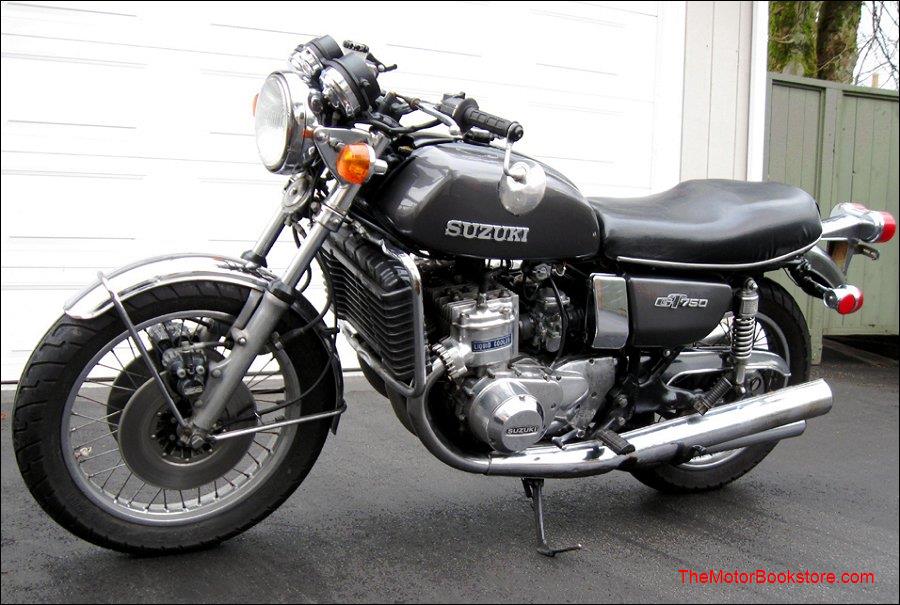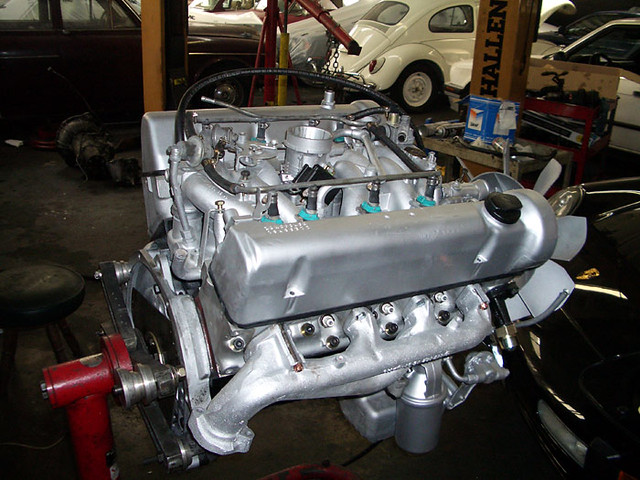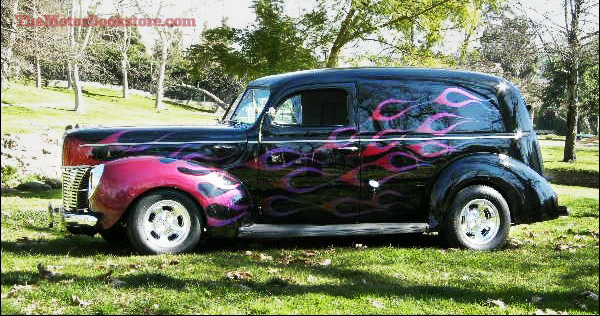
Author Archives: Nadine Reynolds

Getting Your Bike Ready For The Winter
When the leaves fall and the temperature drops, it is a sign to start getting your motorcycle ready for the winter. That, of course, means doing a little more than simply parking your motorcycle in an out of the way corner of the garage or pulling a cover over it while it sits in a storage building. Proper motorcycle winter storage goes a long way in giving your bike a long, useful life.
The first step in getting your bike ready for its winter hiatus is reading the maintenance and repair manual. Repair manuals give you valuable tips about maintenance and tune-ups that can be done before storing the bike for the winter. Some of those tips can be found in the next section.
Winter Storage Tips
Here are a few tips for preparing your motorcycle for winter storage:
- Clean and wax the bike. A clean bike keeps grease, oil, dirt and corrosive materials from damaging the paint or parts of you motorcycle.
- Park the bike in such a way that both tires are sitting on wood. If the bike is outside for the winter months, you certainly do not want the rubber sitting on the ground where the tires can rot and crack.
- Drain the oil and flush the crankcase. This keeps corrosive and gumming deposits from building up over the winter months. Replace the oil filter at this time while you are at it so that you can begin the spring with a new oil filter.
- Lubricate the chain or shaft drive to prevent rust from forming. Rust can damage the chain or shaft while the bike is in storage.
- Drain the fuel from the fuel tank and the carburetor. Sediments in gasoline clog fuel lines. Old fuel creates a harmful varnish on and plug up carburetor parts and fuel lines.
- Go over the wiring to check for cracks or breaks in the insulation. Repair or replace the defective wiring right away. Also, be sure and check to make sure all wiring connections are corrosion free and tightly fitted together.
- Disconnect and remove the battery. The battery will discharge during the winter months, and the acid solution in the battery will freeze. This freezing will crack or damage the battery case.
- Clean the battery cable connections. These connections can become glazed during use, but fine steel wool or a battery cleaner will brighten them back up. Once they are cleaned you can coat them with grease to seal them. This grease can be easily removed next spring.
- Check the wear on disc brakes and make sure the brake fluid reservoir is filled.
- Clean or change the air filter.
- Change your insurance policy. Most insurance companies offer special reduced rates for motorcycles that are in winter storage.
Readying Your Bike For The Next Riding Season
Repair manuals give you all of the how-to information that you will need to perform these simple maintenance procedures. You can also check with your dealer for additional information to help you get your bike ready for storage.
Ice and snow may force you to park your bike for a few months, but with a little end of the season maintenance, your bike will be ready to hit the road when spring comes.
Time to start riding again? Read more tips about inspection and repair when taking your bike out of storage in 6 Tips to Prepare Your Motorcycle For Riding Season.
Engine Rebuild Cost Saving Tips

One of the big reasons to rebuild an engine is that, if done right, it can be significantly less expensive than purchasing a new one. If your budget is particularly tight, you’ll be looking to save every penny you can. Following these engine rebuild cost saving tips below will help your dollar go further when you’re working to get your favorite ride back on the road.
Do your research
When you have a limited budget, you can’t afford to throw away money on parts that don’t fit your engine or to make a mistake mid-rebuild. Make sure to do as much research as possible before beginning. Find out your engine’s model, year, displacement, etc. and determine what parts will match. Get an engine building manual as specific as possible to your engine with detailed instructions. And wait to order parts until you’re absolutely certain what you need.
Only replace what needs to be replaced
Why would you replace your block if it’s still in good enough shape to outlast the rest of the engine? If you’re on a budget, well-functioning is as good as new. You should still replace all bearing, seals, gaskets and piston rings as insurance against future failures. But if your deck is still straight, or if your cylinders only need to be honed, then roll with them. (You can also sell or scrap old parts to offset costs.)
Look for used engine parts
There are plenty of used-but-still-good engine parts available from vehicles that were taken off the road for other reasons. Check local junkyards, Craigslist, eBay and other second-hand sellers for these used parts. The seller is admittedly less likely to stand behind these parts with a warranty, so you’ll want to do your homework and inspect the parts for yourself before purchasing.
Prepare parts before bringing them to a shop
If you do need your cylinder heads bored or your deck milled, you may have to bring them to a machine shop. But you can still save money by preparing your parts beforehand. Disassembling and degreasing the engine core yourself is a lot cheaper than paying $75-100/hour for someone else to do it. (And it should go without saying, but make sure to pick a reputable shop that does fast, high-quality work.)
Not sure if you should rebuild your engine? Read more about rebuilding or buying new here: Rebuilding an Engine: What to Consider Before You Begin.
Car Restoration 101: What to Remember Before You Begin

Whether you’re looking to repair a car that was in an accident, fix up a classic ride, or just want to learn more about vehicles, car restoration can be a fun and rewarding pastime. But if you’re new to restorations, the prospect of rebuilding an entire vehicle can seem daunting. This guide will help you get everything in order so your first restoration project goes as smoothly as possible.
Pick the right car
You don’t want your first project to be a total rust-bucket that’s nearly impossible to find parts for – especially if you’re doing this as a hobby. Search the classified ads and Craigslist, talk to local car clubs for leads, and keep an open mind. Make sure to get a car that’s solid, complete and rust-free. If you have a car you’re eyeing, learn as much about it as possible before you buy, including what parts are used. The internet and automotive manuals are a big help for determining what’s needed and what’s available.
Space and Tools
The next most important things are having a good space to work in and good tools to work with. If you don’t personally have an adequate garage, ask around about spaces that can be borrowed or rented inexpensively. Make sure you own basic tools such as screwdrivers, socket and open-end wrenches, drills and sheet metal scissors. Specialized tools such as engine cranes, torches and welders will also need to be purchased or rented.
Get your finances in order
Do extensive research into what parts you will need and how much they’ll cost. Once you have a rough budget, add at least 30 percent to that. If the final number is outside your price range, you may need to postpone your project or pick a different car.
Don’t be in a hurry
A full frame-off car restoration can take anywhere from 1,000 to 1,500 hours to complete. Thinking about it in those terms can be intimidating, so break it down into digestible chunks. Set a rough schedule, but don’t rush to hit a “deadline”, as this can cause critical mistakes that set you back. And take pride in the individual tasks you complete along the way.
What kind of car would you like to restore?
Interested in learning more about car restoration and rebuilding? Read more about it here: How to Learn Car Restoration. This blog post provides tips and resources to help you get started.

 Shop Store
Shop Store











